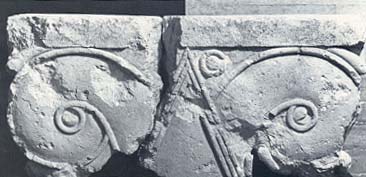Image Details

Israel Antiquities Authority
The capital and dressed stones must have fallen down the steep scarp, having once formed part of a palatial building at the top of the ridge—near Kenyon’s Site H. Given the sophisticated craftsmanship of the capital and its bulk (4 feet long, 2 feet high, 1.5 feet thick), the building it adorned must have been impressive. Did it rest over the entranceway to David’s palace? Although archaeologist Yigael Shiloh dated the stones and capital to the ninth century B.C.E., author Eilat Mazar observes that there is no reason they could not date a century earlier (to the time of David). Or, if they do date to the ninth century, Mazar suggests, they could have come from repairs or additions made later on, while the palace was still in use.
